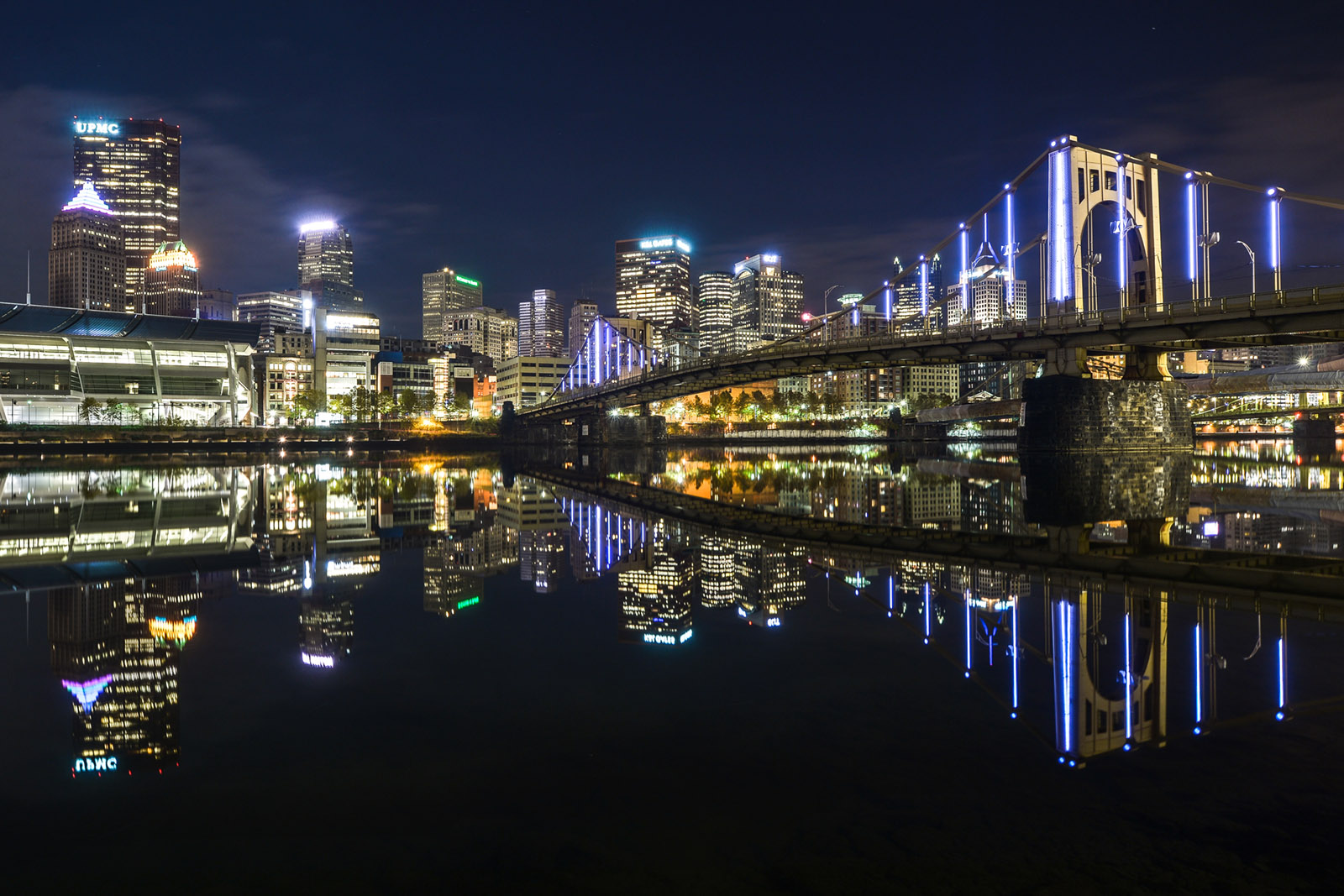Tangibility of artist’s work helps to wake public to environmental issues

Andrea Polli, who will lecture at the Art|Sci Center on Tuesday, creates projects that visualize environmental energy. Her project “Energy Flow” was a wind-powered light display on the Rachel Carson Bridge. The work’s light animations were based on the weather conditions in Pittsburgh. (Courtesy of Christopher Litherland)
Hack the Grid
Art|Sci Center
Thursday
Free
By Cameron Vernali
Nov. 12, 2018 11:55 p.m.
The Hillman Photography Initiative chose Andrea Polli for a project-based partnership, even though she is not a photographer.
Polli, an artist and professor of art and ecology at the University of New Mexico, creates technology-based art pieces to bring attention to how people use and manifest energy. She will speak Tuesday at UCLA’s Art|Sci Center about her artist book, “Hack the Grid,” created in collaboration with the Hillman Photography Initiative, which launched December, and encourages people to understand the energy systems around them, she said. “Hack the Grid” documents Polli’s past and current public artworks that use digital imagery of environmental energy, such as grids of wind-powered LEDs on a bridge. The book also includes photographs, information from environment-related workshops Polli has held, and interviews with researchers that use similar technology forms to spread environmental awareness. Polli said she hopes the book’s accessibility to nonscientists and encouragement of direct interaction through hacker and maker tools can motivate people to take an active role in how they use energy and how it affects the climate currently.
“We just think of (power) as this ether floating around,” Polli said. “I’d like people to have a better understanding of power in its physical form that you can touch and feel.”
Polli’s path into the multidisciplinary intersection of technology, art and the environment first came from her interest in computer programming. She learned from a meteorologist that the differential chaos from fractals – or non-repeating results from a single algorithm – actually modeled the movement of air through the atmosphere, she said. Her continued work with meteorologists eventually guided her towards making work about climate change and power.
The “Hack the Grid” project itself came out of Polli’s involvement with new data on renewable energy. After raising awareness of the work done by scientists for more efficient renewable energy sources, Polli considered making complex and important information relating to climate change accessible to people in the public, she said.
“Here we are working with these super high-tech scientists studying how energy systems work,” Polli said. “It just made me think … ‘How do you bring this to a broader public and help everybody understand more about these energy systems?’”
One of the projects from “Hack the Grid” is Polli’s “Energy Flow” public work – her largest to date. Done in Pittsburgh, the project was a wind-powered light display on the Rachel Carson Bridge. It was composed of a custom nanogrid with 16 wind turbines that powered 27,000 individual LED lights, Polli said.
The large-scale lights would then animate, but with one catch: the patterns were based on wind direction and speed. The Carnegie Museum of Art’s Hillman Photography Initiative assisted with the project, also supporting a series of workshops led by Polli that featured participants, from students to engineers, on the topic of environmentally conscious public artworks like “Energy Flow” itself, Polli said.
Eric Geusz, a digital artist and staff member of Polli’s Social Media Workgroup at UNM, said “Energy Flow” is one of the most memorable projects he’s worked on with the group. Ensuring the lights would withstand different weather conditions and the large scale of the piece proved challenging, but it paid off because the citizens really liked it, especially when it lasted longer than the original three-month time frame, Geusz said. Seeing the citizens of Pittsburgh enjoy and engage with the artwork was fulfilling, he said.
The visual aspect of Polli’s projects can cause viewers to take away more information than expected, Isaiah Smith said. Smith, who documented “Hack the Grid” and was responsible for the group’s media, said Polli’s project is more interactive than other ways of hearing about environmental information because of how technology presents the same facts in a different perspective.
One example is when Smith saw data about the Bellefield Boiler Plant in Pittsburgh – also known as the “Cloud Factory” – presented in simplistic visual forms and shapes. Since technology lends itself to easy-to-follow visual explanations of the information, he had a different experience learning about the plant than if it was just read to him, he said.
“The design … passed information along to help communicate, versus just reading about it in text,” Smith said. “I thought it was a bit more engaging than the traditional way of finding about the Cloud Factory.”
How the public interacts with environmental information in the media is usually through complex charts and graphs that can complicate their understanding of the issues at hand, Polli said. Her project attempts to actively change the usual presentations of climate information and how people engage with energy-related conversations, with a twist: using media to cut through barriers of misunderstanding that can arise from text.
“Being able to do something that’s tactile and physical and engages another part of the brain when we are dealing with media,” Polli said. “‘Hack the Grid’ was totally an opportunity to do something that was trying to combat against that (climate) fatigue and be a positive aspect that someone could take.”


